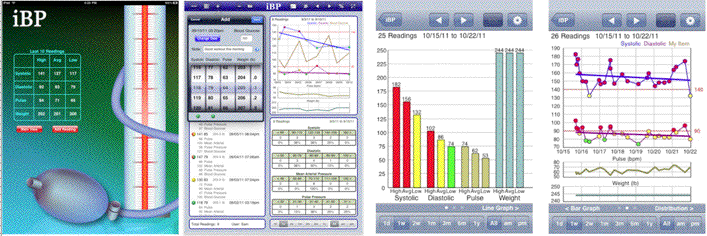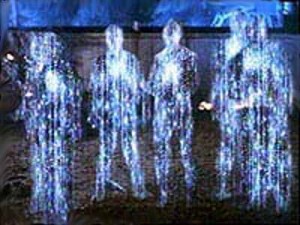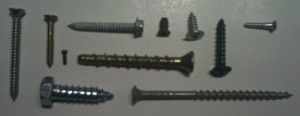Tags
anonymized data, apps, blood pressure, camp, confusion, dementia, epidimiology, gestures, glucose, iBP, iPhone, nutrition, privacy, public policy, smart phone, software
Summary
In previous postings I’ve expressed gratefulness for technological advances. I was especially emphasizing the existence of large data sets of medical research. I enthused about combining them with clinical experience gathered from numberless patients. Several respondents have written to correct the impression I may have left from my idealistic vision. Some warned me that despite the fact that medical databases are intended to increase collective medical knowledge about cancers and other illnesses, my particular experience might be excluded from all of them unless I’d given express written permission beforehand. An epidemiologist cautioned me: “You must realize that, on the topic of “information-sharing”, the only voices the American Medical Association hears, are those from privacy advocates. As a result, a lot of patient data is illegal to compile and include in databases.” Meanwhile, anonymized data is considered to be suspect by scholars. They want guarantees that will allow then to validate all factual information. They demand a reliable provenance trail that continues back to original sources. But if such a trail exists any sufficiently determined individual would be able to find and follow it. Another respondent told me about a summer camp for children with cancer. The camp founders provide a parallel experience for siblings and another for parents. This innovative and thoughtful idea nearly didn’t get off the ground. There was no legal way for the founders to canvas and identify cancer patients in area hospitals or under local physician care. This made it difficult for the camp administrators to issue a general invitation to their target users to participate in the camp. Even though the camp was free and was intended to augment and enhance the medical care that was being administered to the patients, privacy issues forbade access even to the existence of cancer patients. Word-of-mouth has eventually been enough to pass the word around about the camp. It has proven enormously beneficial to all concerned.
There exist a few more steps that must be taken by software engineers, policy-makers, and the general public before the vision of integrated and interactive databases containing both research and clinical experience comes to full fruition. In the interim, the technologies that allow the creation of massive databases, and those that provide access to the data from almost anywhere in the world, are continually improving. New ideas are emerging (eg.: cloud storage, customized security, policies for protecting privacy, authentication of entries, controls for participating users). All these are providing great value. Today’s experiments answer practical concerns for the present and the future. Through incremental improvements, software is iteratively refined for more effective implementation. So I continue to be optimistic that technologies of a not-too-distant “tomorrow” will be able to leverage research and all clinical experience. That would accelerate the discovery of new techniques with which to deal with human illnesses.
Despite my optimism about technology, I find it depressing that, in the United States, individual privacy issues trump and constrain the implementation of what could have wide social benefit. Upon fleeting consideration, I can comprehend some of the components of this paradoxical conundrum. But I am not pleased by the results. Its a topic for future consideration… perhaps by all of us.
In the following reflection I want to turn away from broad macro-solution advances. Instead, I want to draw attention to little, generally-available technologies that are a boon to me in my day-to-day experience.
Detail
From earlier posts you will have learned of some of my fears. My fears have surfaced as I progress through this experience of cancer in my life. Here’s another to add to my list: I am very afraid of dementia. I am highly empathetic to people who are simply confused by the world around them or who are afflicted with medical disabilities that manifest themselves in such a disabling manner. I admit to experiencing an almost visceral pain when I observe dementia in members of my family or close friends. My own experience of confusion is minimal, at worst. But even this minimal experience is enough to increase my sensitivity to (read, “horror of”) dementia.
My own inconsequential confusion results from the unanticipated assault cancer has made on my regularly well-organized (if only by habit) life. Suddenly, I was confronted by a series of entirely new priorities. Suddenly, I was faced with a good deal of brand new information. Suddenly, I experienced a radical overhaul of my personal daily and weekly schedule. Suddenly, my time and freedoms were constrained.
I listen as attentively as possible to the advice of nurses and doctors who instruct me about what signs I should watch; what medications I should take; what activities I should avoid and others I should maintain and increase. They ask me to take notice of my blood pressure throughout the day, to report the data to my primary care giver, to record my blood sugar levels periodically, and to adjust various medications on the basis of the results of my bi-weekly blood tests. It all sounds perfectly reasonable and logical. However, I’m startled to find I can’t remember what it was that, just days previously, I understood and assented to. I have trouble attending to entirely simple (but suddenly required) tasks such as regularly recording my blood pressure. I believe all cancer patients suffer from this attack on their normal routines.
The cause of my discomfiture (which reminded me of dementia even though it is far, far from it) is that the changes we cancer patients experience are so abruptly and suddenly imposed on us. The instructions I receive are ones I’d not anticipated. I didn’t prepare ways of smoothly incorporating new tasks into my daily activities. From an evolutionary perspective, we humans may benefit from our considerable adaptability of behavior. But it appears that we also depend, to a great extent, on the comfort of routine.
To use but one among several possible examples, in my “former life” I had no need to develop a routine for monitoring my blood pressure. When it was suddenly important to do, I employed techniques I used normally, i.e., writing down my readings on scratch paper or on “to do” lists, so I’d be reminded to e-mail my readings to my primary doctor. However, not having been a part of my “normal” routine, I discovered that the notes on which I wrote down my readings got lost; they didn’t have a natural “place” on my desk. They ended up not being transferred to a central consistent file of blood pressure readings. I found I’d neglected to date the notes. If I dated them, I forgot to jot down the time a reading was taken. Stickies were of no use; there was no place to stick them to. I tried logging my blood pressures in a journal, but found it to be cumbersome. The journal book seemed never to be at hand when I had a blood pressure cuff on my arm. When it was time to send a record of my readings on to my doctor, I had to transfer the handwritten records onto e-mails. Then I discovered the obvious: that typing lots of numbers was highly susceptible to typos and errors. The whole simple matter became a nuisance. And the nuisance manifest itself when I least needed to be bothered by frustration.
But I have a smart phone. Ok… its an iPhone. (I aspired to being inclusive in this description and I believe most smart phones have similar applications. Perhaps not.) [1]
I know you’ll recognize the paradox with my owning an iPhone. I realize (and I know that most of my readers know)—that I am not an intensive telephone user. In fact, it can legitimately be claimed that neither am I a casual phone user. Nonetheless, I often carry my iPhone. It comes fitted out with useful apps. An app is differentiated from a full-featured application program. Precisely where lies the border between the two, I am uncertain. Both are written in programming code, and one is small enough to reside comfortably on the limited, but nevertheless capacious, space in the iPhone. An app also runs under the iPhone’s similarly compact operating system, whereas an application might require a more robust operating system.)
My iPhone is handily compact, fitting into my shirt pocket. I now record my blood pressure readings on my iPhone. The small app I employ for my purpose is called iBP.[2] When I place a blood pressure cuff on my arm, I simultaneously launch the iBP app on my iPhone with my free hand. When the reading is available on the cuff display, I use finger gestures to “roll some dials” on the iPhone display. My goal is to set the dials to correspond to the proper diastolic and systolic readings I’m reading from my cuff. I twirl a third dial to record my pulse rate. The iPhone “knows” the time and date, so I needn’t worry about those settings. With a click, the various pieces of data are saved and stored in the app’s memory. But as the huckster on TV infomercials continually repeats: “But wait! There’s more!”
• What I particularly like (since I am, largely, “a visual learner”) is that I can swipe my fingers across the screen to reveal a tabular rendering of my blood pressure readings (today’s, this week’s, this month’s, etc.). But wait! There’s more!
• If I swipe my fingers across the screen of the iPhone again, it reveals either a bar chart or a line chart representing my readings. I favor the line chart because it not only displays dated color-coded dots for each of the readings I’ve taken (green for “within range”, red for “outside of range”, yellow for “just right”) but it also calculates a trend line. This lets me see the direction in which a set of readings is going, over time, flattening the spikes and valleys of my highly variable readings. But wait! There’s more!
• The opening screen of the humble but impressive iBP app displays an “at-a-glance” summary of my last 10 readings. In shorthand, it calculates the number of readings I’ve taken over various lengths of time; it distinguishes those that were taken during the mornings from those taken during the evenings; it calculates averages. But wait! There’s more!
• I can capture a photo of any one of these images with a mere tap on a button shaped like a camera. This stores the images for my future use. But wait! There’s more!
• I can select some durations, some categories of information, and some file formats (all of which settings, my iPhone conveniently remembers from use to use). Having done so, I can send these via e-mail to my primary care giver, to myself, or to anyone else I choose.
Such a tool is, obviously, extremely beneficial. It is one very complicated and very compact computer program that has been designed by one or a group of very detail-conscious engineers. It is also specifically designed to be easy and intuitive to use. It resides on a familiar ever-at-hand device: my iPhone. iBP is only one example of a technology, at the consumer- or user-level, that has simplified my life. It has eliminated an unnecessary confusion and has provided several benefits.
From a technical perspective, the app is exemplary because it captures my blood pressure readings once. I don’t have to write them down and then transcribe them onto my computer. I don’t have to enter them into different calculators to generate trend lines, averages, or graphs. I don’t have to put them into a table to find the peaks and valleys of the readings. The app provides all these easy manipulations because those tasks are simple tasks to encode in programming code. My blood pressure data is thereby usefully augmented through simple mathematical manipulation (finding an average, distinguishing between morning and evening readings, calculating a trend, etc.). The app provides useful visual displays for the “numerically challenged” (like me) using color, graphs, and charts to display the numeric data. The iPhone provides convenient safe storage (with backup and sync possibilities). Collecting my blood pressure readings—facilitated by the use of iBP on my iPhone (or iPad)—is easily integrated into work habits to which I’ve previously become habituated. Adding a new function (recording my blood pressure) is not quite as disconcerting as it was when I had begun to log my readings on scraps of paper or tried logging the readings onto a journal.
I have a separate app on my iPhone for capturing and logging glucose levels. I have another for tracking nutritional values of things I eat. I have a third to log my exercise and encourage me, every once in a while, with motivational phrases (I can do without them, but they may be helpful to others). Other cancer patients may find different apps that satisfy other particular needs. There are many medical apps on the iTunes store; and they are generally priced affordably. The freedom to capture data easily and to manipulate it and view it easily, makes it more likely that I will engage myself with what the data actually means. I can be attentive to dangerous trends. Before I possessed such an easy method, I was caught up with the process of collecting and recording my data. That took my attention off the prime target: the readings themselves and what they showed that was pertinent to my health and recovery.
Now… if only I could locate an app that would seamlessly “beam me up” to the track or nearby nature trail! Such an app could compel me to do my much-needed daily exercise regimen. THAT would be technology worth a king’s ransom! It would surely delight Monica and my doctors. Me, too… …maybe.
Chet
Notes
[1] Most of you who are reading this blog know that I’ve been an Apple enthusiast since the very first Apple II I managed to obtain while working at the University of California Press. My initial requisition for it as a “personal computer” was denied by our CFO. The next day, I resubmitted the request with all details exactly as I’d written them the day before, but titled the Apple II as “replacement electronic typewriter”. My requisition was promptly approved. I’ve never looked back.
[2] iBP is published by Leading Edge Apps, LLP, and is available on the iTunes online store.



